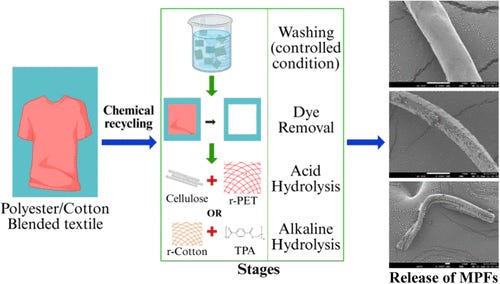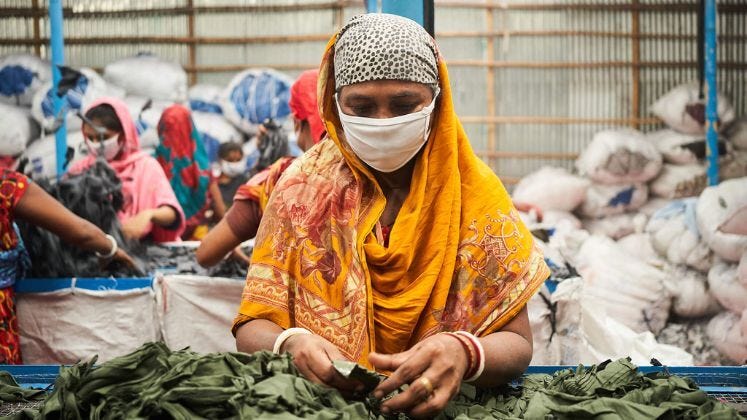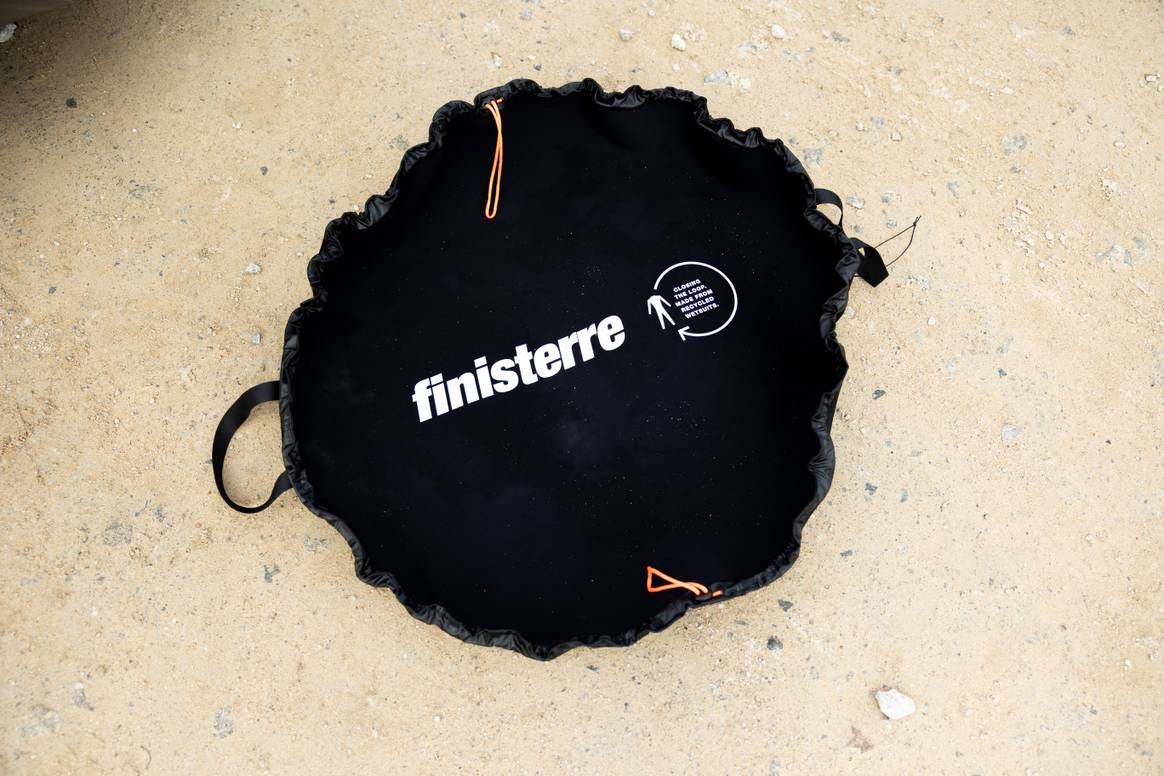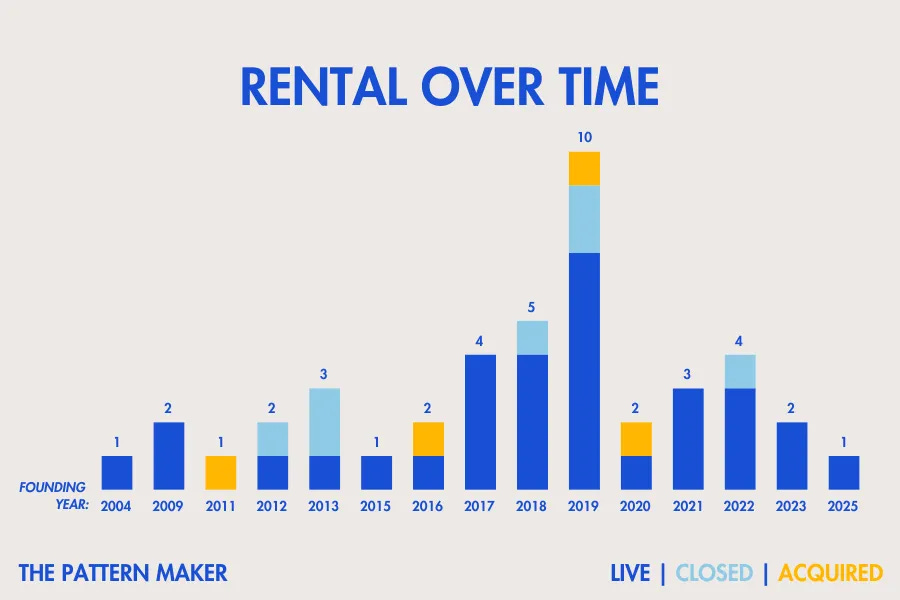Circular Fashion News / April 28: Indyx & Third release insight-packed reports, Chemical recycling under scrutiny, Syre to open textile recycling factory in Vietnam
Your weekly edit of what has happened in the circular fashion space. This week, the focus is on new studies and reports: resale, textile recycling, and the future of the circular fashion industry.
Welcome to reading a weekly recap of circular fashion news! Some of last week’s highlights in the circular fashion industry included:
A new study released on the state of the European circular fashion market - this is a great market research resource for brands and startups building in the space!
A study revealed that 90% of apparel products environmental impact comes from manufacturing
Indyx released the State of Our Wardrobes Report, revealing the alarmingly low utilisation rate of our wardrobes
Resale startup Third released a “Third Find Investment Report”, highlighting the luxury handbags holding value in the resale market
Phia, an AI shopping assistant, launched this week, featuring secondhand fashion alongside new fashion
Vinted took on the “celebrity closet sale” trend by releasing a closet sale with Alexa Chung
A new study was published, revealing that chemical textile recycling releases a significant amount of microfibers
Experts have raised concerns about the lack of textile waste recycling in Bangladesh, the second biggest exporter of apparel
Syre announced to be opening a textile recycling factory in Vietnam
Industry News
A new study was released on the state of the European circular fashion market
The report examines four key stages of the circular fashion ecosystem: 1) Reinventing fashion at the design stage, 2) reusing, 3) repairing, and 4) recycling.
For each stage, the report outlines the environmental impact, business opportunities, market forecasts, and relevant or upcoming regulations. It provides a detailed overview of the opportunities and solutions available at each phase, while also highlighting the barriers and challenges brands must overcome to successfully implement circular practices.
Key market growth projections in Europe include:
Secondhand fashion: Projected to reach €26 billion by 2030, creating over 75,124 jobs. Growth is fueled by both peer-to-peer platforms and brand-led resale initiatives.
Repair market: Expected to grow to €3.7 billion by 2030, supported by regulatory measures and public incentives such as France’s repair bonus, potentially adding nearly 9,826 jobs.
Textile recycling: Forecasted to reach €1.6 billion by 2030, with over 3,500 new jobs, although progress is limited by existing technical and structural barriers.
If you are a fashion brand aiming to build a more circular business model, or a startup developing solutions for the circular fashion space, this report is an invaluable resource.
—> Download the full study here (don’t worry, the questionnaire is in French but the report is in English!)

New study: 90% of fashion’s environmental impact comes from manufacturing
Glimpact, a platform specializing in environmental impact analysis, has published a new study examining the environmental footprint of fashion products using their upcoming Global Impact Score tool (soon available for public use!).
The findings are clear: about 90% of a product’s total environmental impact stems from manufacturing, including raw material production and energy-intensive processes like dyeing. By contrast, packaging and distribution contribute less than 10% overall, unless air freight is used, which can significantly increase the footprint.
The study was designed to help brands focus their efforts where it matters most and avoid unintentional greenwashing. Once again, the results highlight that the biggest opportunities for reducing environmental impact lie in improving manufacturing practices, or even better, avoiding new production altogether by scaling resale, rental, repair, and other circular models.
What happens to the environmental impact when the product is in use?
An important point to note is that in the study, the environmental footprint of different apparel products is divided by the number of times the product is worn. To determine these wear assumptions, the study (most likely) follows the Apparel & Footwear PEFCR version 2.0 framework.
Naturally, the more a product is worn, the lower its environmental impact per use becomes. However, these standardized assumptions can sometimes distort our perception of a product’s manufacturing footprint. For example, in this study, cotton was found to have a significantly higher environmental impact than polyester during production. But in real life, a cotton garment might last much longer and be worn more often than a polyester one, ultimately lowering its total impact per day of wear.
This detail of how many times a product is worn is a great example of the many variables that need to be considered when trying to define what makes the “most sustainable” piece of clothing.
Reuse of fashion
New section! Building a circular fashion industry is not only about what we can do with clothes when we don’t use them anymore, but it is also about how we can change our behaviour to use the clothes we have for longer. This section highlights news and new information we have about using our clothes for longer.
(The circular fashion industry is also about creating products that are durable and designed for circularity. I'm still considering whether news about product durability and design will become its own section in the future, or whether it will be included within the existing ones!)
Indyx released the State of Our Wardrobes Report, revealing the alarmingly low utilisation rate of our wardrobes
A wardrobe management app Indyx released “State of Our Wardrobes Report”, revealing what is in our closets and how we wear those pieces. The report is based on tens of thousands of digital closets from the Indyx app.
The report is full of fascinating insights, and here are few highlights:
25% of our wardrobes sit completely unused
Nearly 75% of our wardrobes are bought during last three years
We add 59 items to our wardrobes each year, which is a far cry from the 5-item-per-year limit often cited for sustainable consumption
The report’s data shines a bright light on how low the utilization rate for our clothes is, and how we continuously buy more and more. This is the opposite direction of where we shoulld be heading. Emily Stochl from Pre-loved dived into the report in more detail, exploring how we can use its insights on an individual level to change our purchasing habits and start wearing what we already own.

Fashion Resale
Resale startup Third released "Third Find Investment Report" on luxury handbags retaining value in resale
A resale startup, Third, released a “Third Find Investment Report”, analyzing the value and investment potential of luxury handbags.
For the report, Third analysed resale data across 25+ of the world’s most trusted luxury resellers, and the report includes, for example, ROI percentages for different bags, analysis of key investment features, and recommendations on where each type of bag should be purchased from.
In addition to releasing the report, the Third CEO, Trinity Hislop, announced that they are building the “world’s first multi-trading facility for luxury handbags”. Let’s keep an eye on this 👀
—> Download the full report here
Phia, an AI shopping assistant, launched this week, and it’s featuring a great amount of secondhand fashion
Phia, the startup founded by Sophia Kianni and Phoebe Gates, launched its AI-powered fashion shopping assistant last week. The tool is available as both a mobile app and a Chrome extension, and it functions primarily as a price comparison tool. It analyzes whether the price you're about to pay for an item is relatively high or low and suggests more affordable alternatives when available.
In addition to new fashion, Phia features a wide selection of secondhand fashion, naturally, as it is most often the best choice for finding the lowest prices.
—> See more
Vinted takes on the “celebrity closet sale” trend by releasing a closet sale with Alexa Chung
Vinted launches a closet sale with stylist Alexa Chung, featuring designer pieces from Chung’s closet. This campaign aligns with Vinted's ongoing shift toward designer and luxury fashion.
The “curated closet sale” has become a trendy way to sell and shop secondhand fashion. Recently, resale platforms such as Vestiaire Collective and The RealReal have released curated closet sale campaigns.
Vinted’s campaign with Alexa Chung follows a similar marketing message to Vestiaire Collective’s campaign with Paris Hilton: the closet sale is organized, and the influencer is selling their beloved pieces because their style is evolving in another direction.
—> See more about the Vinted x Alexa Chung campaign
—> Read more about the “closet sale” trend
Textile Recycling
A new study has revealed that chemical textile recycling releases a significant amount of microfibers
A study from the University of Newcastle in New South Wales revealed that microfibers are released in each stage of chemical textile recycling. The study called for urgent risk assessments and stronger environmental safeguards for chemical recycling processes.
Recently, Business of Fashion published a story about the state of textile recycling, and also highlighted the energy intensity of chemical recycling of textiles and the high chemical amount needed in the process, which impact the total environmental impact of the process.
Bangladesh is under pressure to increase its textile waste recycling capabilities
Bangladesh, the world’s second-largest apparel exporter, generates approximately 577,000 metric tonnes of textile waste annually. Much of this waste is processed informally through a network of unregulated workshops, where the workforce is predominantly women working in unsafe conditions.
Experts have raised concerns about the country’s lack of textile waste management infrastructure. While some neighboring countries, like India, recycle around 60% of their textile waste, Bangladesh’s recycling rate remains low.
—> Read more
Short news on textile recycling
Syre to build a textile recycling factory in Vietnam – Swedish textile recycling company Syre has signed a Memorandum of Understanding with Vietnam's Binh Dinh Province to develop a gigascale recycling facility. The project is part of Syre’s broader ambition to establish several gigascale textile-to-textile recycling plants worldwide over the next decade.
Ambercycle and Highsun partner to scale circular synthetic textiles – Textile-to-textile recycler Ambercycle has partnered with polymer and yarn producer Highsun to advance the recycling of synthetic materials. The collaboration covers joint fiber market development, end-of-life textile feedstock sourcing, engineering cooperation, new material production, and the promotion of quality and industry standards for circular textiles.
Finisterre launched a first-ever product made from recycled wetsuits – An outdoor brand Finisterre has launched the first-ever product made from recycled wetsuits: ‘From Wetsuits’ changing mat. The recycling of old wetsuits is low, and each year, an estimated 8,380 tonnes of old wetsuits are discarded, often ending up in landfill sites due to their complex material composition.
Upcoming events
Drapers Webinar on Wednesday, 30th of April: How to grow resale into a successful business with The North Face, Sandro and Maje – This is a webinar on launching and scaling fashion resale for fashion brands. Speakers from The North Face and SMCP (the group behind brands like Sandro and Maje) will discuss how to build and grow resale initiatives tailored to different companies. Archive, a third-party resale solution provider, will also join to talk about selecting suitable resale models and addressing operational and technological challenges.
Bookmarked this week
Discovered
Clothing swap organizer: Loanhood – A UK-based company organizing clothing swaps and other sustainable fashion events. They have organized clothing swapping events for example with Selfridges.
Deadstock fashion brand: Facettes Studio – French fashion brand crafting classic and minimalistic pieces from luxury brands’ deadstock materials. See the Good on You rating for the brand here.
A new wardrobe management app on my radar: The Killer Muse – The Killer Muse is building a new wardrobe management app with focus on styling and community. Currently, the space of wardrobe management solutions include companies like Indyx, Save Your Wardrobe, Whering, and Cloud Closet.
New circular solution in the making: Cirqular – An Australian-based Cirqular is building a full circular solution for fashion, offering services like restyling, repairing, reselling, and donating for individuals.
A new social enterprise promoting regenerative practices and circularity: Indilisi – This is a company by Safia Minney, and Brett & Scott Staniland, crafting organic cotton clothing, as well as selling surplus organic and fairtrade fabrics. The sale of fabrics (in addition to a line of clothing) intends to supply makers, designers, and brands with high-quality, sustainable fabrics.
Read & Listened
Article: Outfit of defiance: Would you wear shoes made out of rugs? by Chloe Mac Donnell, The Guardian – The Fashion Revolution Week’s “Mend in Public” day was covered in The Guardian with encouragement towards mending and upcycling. The article features multiple upcycling designers, as well as the new upcycling app, Loom.
Article: What we lose when we spend to feel better by Daphne Chouliarki Milner, Atmos – A reflection on our culture of consumption, and how it has become an inherent part of our source of happiness. These are the thoughts and questions we need to decouple the fashion industry from constant consumption, especially on an individual level.
Substack: FashionTech Market Memo: Rental - Part 1, by Rachel Sterling, The Pattern Maker – This was a great overview of the current fashion rental market. It looks at the history, players, and business models of the industry, but also the tech, social, and regulatory shifts driving the market.
Podcast: Activists and creatives behind Recommerce Atacama by Clare Press, Wardrobe Crisis – Clare Press from Wardrobe Crisis featured the activists and creatives behind the Recommerce Atacama campaign in the podcast’s annual Fashion Revolution episode. The Recommerce Atacama is a genius campaign launched to spotlight the fashion industry's alarming practice of dumping discarded clothing in the Atacama Desert in Chile.
That is all from last week, let’s hear again next week! In the meantime, let’s continue the discussion in the comments, on LinkedIn, or in the newly published Circular Fashion News Instagram!
xx Tiina



























Thank you for the special mention! Really enjoy reading your newsletter, it’s full of great insights.
Thank you for this! It’s great to read these insights & news in one place ❤️❤️❤️ super interesting about the tiny impact of packaging - a good reminder to not be greenwashed by brands advertising their recycled packaging